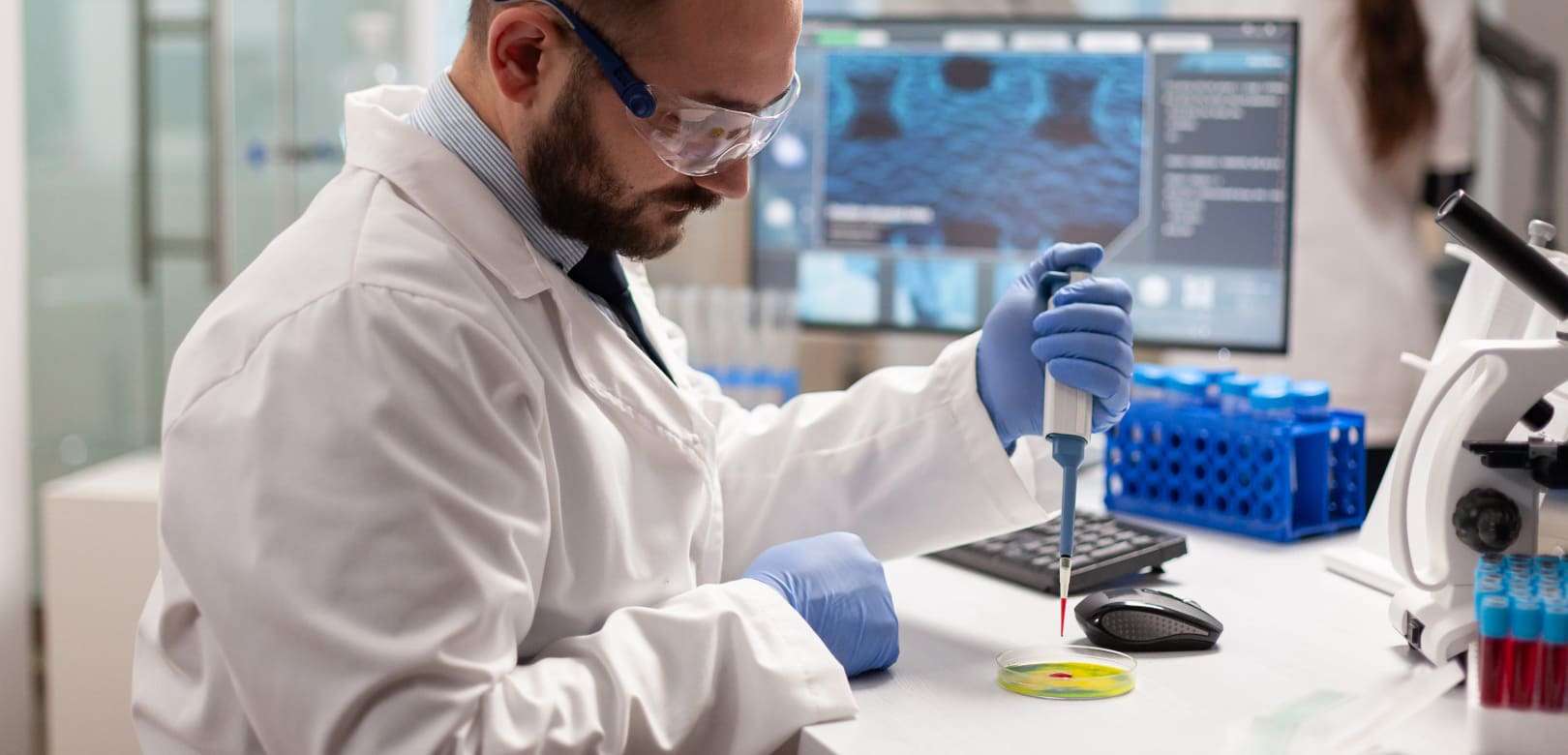Laboratory micropipettes are precision instruments used to accurately measure and transfer small volumes of liquids. They are essential tools in scientific research, clinical diagnostics, pharmaceutical development, and various other laboratory applications. Micropipettes are designed to handle volumes ranging from microliters (μL) to milliliters (mL), with some models capable of dispensing volumes as small as fractions of a microliter.

Key components of a typical micropipette include:
Plunger:
The plunger is used to aspirate (draw in) and dispense liquid. Depressing the plunger aspirates the liquid into the tip, while releasing it dispenses the liquid.
Volume Adjustment Mechanism:
Micropipettes have mechanisms for adjusting the volume to be aspirated and dispensed. This adjustment is typically done using a dial or thumbwheel located on the micropipette body.
Tip Ejector:
A button or mechanism is provided to eject disposable tips after use. This helps maintain sterility and prevents cross-contamination between samples.
Tip:
Micropipettes are used with disposable tips that come in various sizes to accommodate different volumes. These tips ensure accurate and contamination-free dispensing of liquids.
Display:
Many modern micropipettes have digital displays that indicate the set volume, allowing for precise volume adjustment and measurement.
Micropipettes are available in different formats, including:
Single-channel micropipettes:
These are designed to dispense a single liquid at a time and are suitable for general laboratory use.
Multi-channel micropipettes:
These micropipettes have multiple channels (usually 8 or 12) and are used for simultaneous dispensing into multiple wells or tubes, making them ideal for high-throughput applications such as ELISA assays or PCR. Micropipettes are calibrated to ensure accuracy and precision in volume delivery. Regular calibration and maintenance are essential to ensure reliable performance over time.
Guide to Choose the Right laboratory Micropipette:
Selecting the right laboratory micropipette is crucial for accurate and precise measurements in scientific experiments. Here’s a guide to help you choose the right one:
Volume Range:
Consider the volume range you’ll be working with. Micropipettes come in various ranges, from microliters to milliliters. Choose one that covers the majority of your required volumes.
Accuracy and Precision:
Look for micropipettes with high accuracy and precision ratings. This ensures that you can trust the measurements for your experiments. Check the manufacturer’s specifications for accuracy and precision levels.
Ergonomics:
Comfort is important, especially if you’ll be using the micropipette frequently. Look for models with ergonomic designs that reduce hand fatigue and strain during prolonged use. Consider factors like weight, grip, and ease of operation.
Adjustability:
Some experiments may require adjustable volume settings. Choose micropipettes with easy-to-use volume adjustment mechanisms that allow you to precisely set the desired volume.
Calibration and Maintenance:
Check if the micropipette is easy to calibrate and maintain. Regular calibration ensures accuracy over time. Look for models with straightforward calibration procedures and availability of calibration services.
Compatibility:
Ensure compatibility with the type of liquids you’ll be pipetting. Some micropipettes are designed for specific applications or types of solutions. For example, there are specialized micropipettes for viscous liquids or volatile compounds.
Durability and Materials:
Invest in micropipettes made from durable materials that can withstand regular use and cleaning. Consider factors like corrosion resistance and autoclavability if sterilization is necessary for your experiments.
Single vs. Multi-channel:
Depending on your needs, you may choose between single-channel and multi-channel micropipettes. Single-channel pipettes are suitable for individual measurements, while multi-channel pipettes allow simultaneous dispensing into multiple wells or tubes, increasing efficiency.
Brand Reputation and Support:
Opt for reputable brands known for producing high-quality laboratory equipment. Good brands often offer reliable customer support, warranties, and readily available spare parts.
Cost:
While quality should be a priority, consider your budget constraints. Compare prices across different brands and models while ensuring that the chosen micropipette meets your requirements for accuracy and reliability.
Laboratory Micropipettes have several benefits:
Accurate Measurements:
Healthcare professionals rely on precise measurements for diagnostic tests, medication dosing, and sample analysis. Micropipettes ensure accurate volumes of reagents, samples, and medications, reducing the risk of errors in healthcare procedures.
Precision in Laboratory Testing:
In clinical laboratories, accuracy and precision are paramount for reliable test results. Micropipettes enable precise dispensing of small volumes of samples, reagents, and controls, ensuring the accuracy of various tests such as blood chemistry analysis, PCR, and ELISA.
Standardization and Quality Control:
Standardized measurement techniques facilitated by micropipettes contribute to consistent laboratory procedures and quality control measures. This consistency enhances the reliability and reproducibility of test results, crucial for patient diagnosis and treatment monitoring.
Minimization of Contamination:
Micropipettes with disposable tips minimize the risk of cross-contamination between samples, reducing the potential for erroneous results and preventing the spread of infections in healthcare settings.
Efficiency and Time Savings:
The use of micropipettes streamlines laboratory workflows by allowing rapid and accurate dispensing of liquids. This efficiency translates to shorter turnaround times for test results, facilitating prompt patient care and treatment decisions.
Reduced Waste:
Precise volume measurements minimize the wastage of reagents and samples, optimizing resource utilization in healthcare facilities. This aspect is particularly important for costly or limited-supply reagents and biological samples.
Enhanced Safety:
Micropipettes contribute to safer laboratory practices by minimizing the need for manual handling and transferring of liquids, reducing the risk of spills, exposure to hazardous substances, and occupational injuries among healthcare workers.
Flexibility in Applications:
Micropipettes are versatile tools suitable for a wide range of healthcare applications, including clinical diagnostics, pharmaceutical research, molecular biology, and microbiology. Their adaptability to diverse sample types and assay formats makes them indispensable in various healthcare disciplines.
Overall, laboratory micropipettes are indispensable tools for accurately measuring and transferring small volumes of liquids in scientific and clinical laboratories, contributing to the precision and reproducibility of experimental results.


